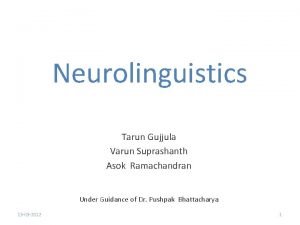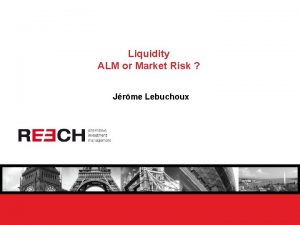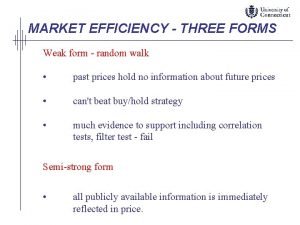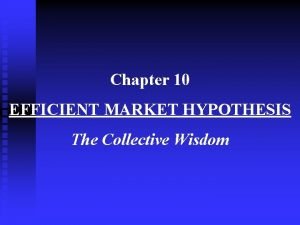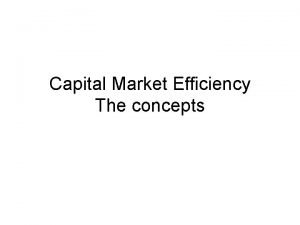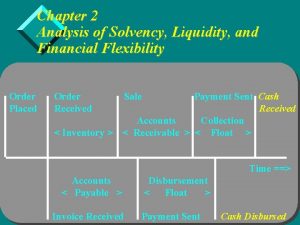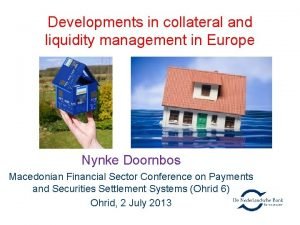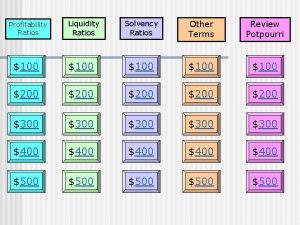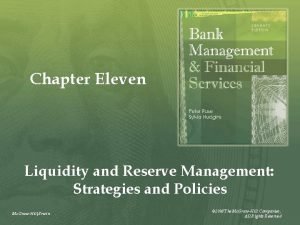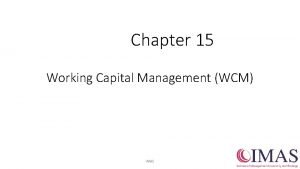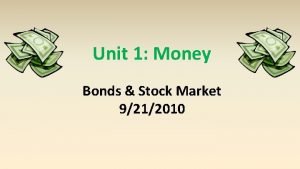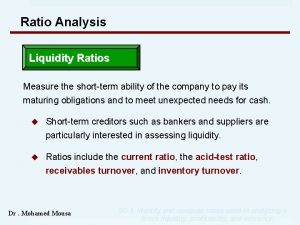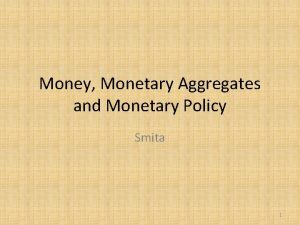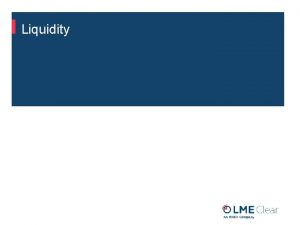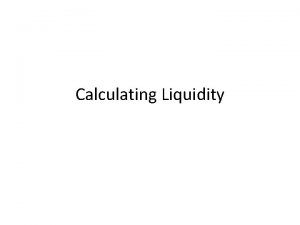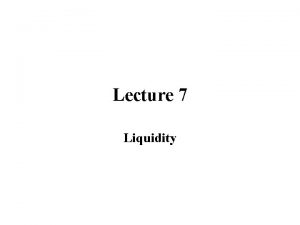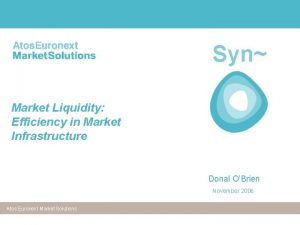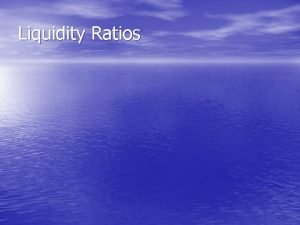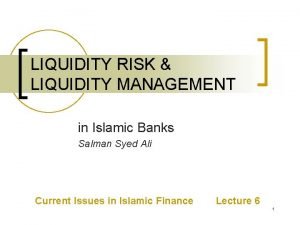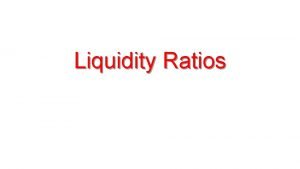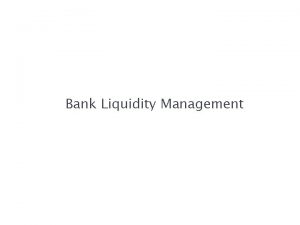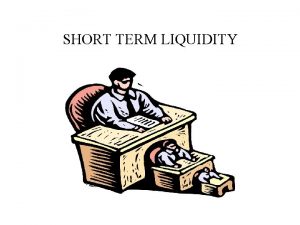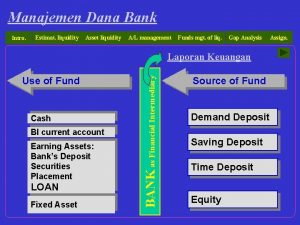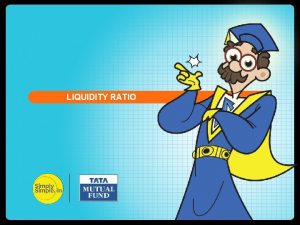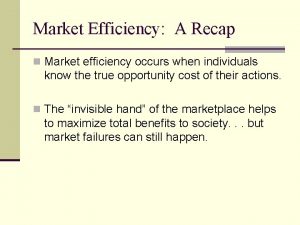Liquidity and Market Efficiency Tarun Chordia Emory Richard























- Slides: 23

Liquidity and Market Efficiency Tarun Chordia (Emory) Richard Roll (UCLA) A. Subrahmanyam (UCLA)

Market Efficiency n Cannot be instantaneous n CRS (2005) shows that order flows do predict very short-term returns n Efficiency is created in part by arbitrageurs, who are subject to transaction costs n What is the empirical relation between liquidity and market efficiency?

Liquidity n Has generally been related to broader finance by way of a premium in asset returns (Amihud and Mendelson, 1986) n Also may play a role in moving prices to efficient outcomes—this is what we investigate

Efficiency over time n Secular decrease in bid-ask spreads across the three tick regimes n How did this affect efficiency? n How does efficiency vary within the day?

Interday efficiency measures n Open-close and close-open variance ratios (viz. French and Roll, 1984) n Daily return autocorrelations n How have these varied across the three tick size regimes corresponding to increased liquidity?

Theoretical setting n. A security is traded at dates 1 and 2 and pays off + at date 3 (variances v and v ). n A demand of z 2 arrives at period 2. n In addition, a fraction kz 1 arrives at period 1 and (1 -k)z 1 at period 2 where 0<k<1. n Variances of z 1 and z 2 both equal vz.

Equilibrium n Market makers with CARA utility and risk aversion absorb order flows n The mass of market makers at dates 1 and 2 is M and N, with N>M n Equilibrium is of the Walrasian type n Let Pi and Qi be the price and order imbalance at date i, respectively

Return Predictability

Central results n If the mass of market makers at date 2 is sufficiently large, lagged imbalances positively predict future returns n If markets are very liquid (market makers’ risk bearing capacity is very high), such predictability disappears.

Data n Comprehensive sample of NYSE stocks that traded every day n We construct five minute returns for portfolio based on mid-quote returns n If a stock did not trade in period t, it is excluded from the t-1 portfolio n Liquidity proxy is the effective spread, averaged across the trading day


Decline in return predictability R 2 goes to more than 10% to virtually zero n T-statistic also drops from around 12 to about 1 -2 n The pattern in imbalance autocorrelations (which are 0. 28, 0. 21, respectively, across the eighth, sixteenth, and decimal regimes) is not sufficient to directly cause this decrease. n


Illiquid periods n Defined as days where the de-trended effective spread is more than one standard deviation above its mean within each tick size regime n We use an indicator variable, ILD, which is one on illiquid days

Regressions using illiquidity indicator ILD (dependent variable is mid-quote returns at time t)

Liquidity and predictability n The predictability of returns from lagged order flows is greater on more illiquid days n The effect is present in every tick regime

Market efficiency by time of day n Since spreads vary by time of day (Mc. Inish and Wood, 1992), there is reason to expect a similar pattern in return predictability n We define two dummies, morn (9: 3012), and eve (14: 00 -16: 00)

Time-of-day effects

Intraday efficiency results n The market’s ability to accommodate order flows was smaller during the morning and, to a lesser extent, the evening period within the eighth regime n This effect has declined considerably during the decimal period

Interday measures of efficiency n n We consider open-close and close-open variance ratios, and return autocorrelations French and Roll (1984) show that these are statistically greater than unity They show that this phenomenon is not due to greater public information flows (by analyzing business day closures) and argue that it may be due to microstructure effects, mispricing, or private information trading How do these quantities change across the three tick regimes?

Daily variance ratios and autocorrelations

Interpretation The evidence is that variance ratios have increased but autocorrelations appear to have declined n We use mid-quote returns, so bid-ask bounce is not an issue n If mispricing were driving the increase in variance ratios across time, autocorrelations should have increased as the tick size decreased; but there is no evidence of this. n Consequently, the evidence is consistent with private information being more effectively incorporated into prices in the lower tick regimes, especially for smaller firms. n

Conclusions The extent of return predictability from order flows (an inverse measure of market efficiency) has decreased over time and also is higher on illiquid days. n Variation in efficiency by time of day has diminished following decimalization n Variance ratios have increased whereas autocorrelations have decreased in recent years, suggesting an increase in private information being incorporated into prices following decimalization. n
 Who took tarun to school the first day
Who took tarun to school the first day Tarun gujjula
Tarun gujjula Nomura lehman cultural differences
Nomura lehman cultural differences Opportunity cost formula
Opportunity cost formula Alm liquidity
Alm liquidity Productively efficient vs allocatively efficient
Productively efficient vs allocatively efficient Productive inefficiency and allocative inefficiency
Productive inefficiency and allocative inefficiency International market segmentation
International market segmentation King richard iii and looking for richard
King richard iii and looking for richard Leader challenger follower nicher
Leader challenger follower nicher Three forms of market efficiency
Three forms of market efficiency Efficient market hypothesis.
Efficient market hypothesis. What is capital market efficiency
What is capital market efficiency Define liquidity financial flexibility and solvency
Define liquidity financial flexibility and solvency Plastic limit formula
Plastic limit formula Liquidity profitability and solvency
Liquidity profitability and solvency Liquidity planning and managing cash assets
Liquidity planning and managing cash assets Xborder funding mc
Xborder funding mc Solvency ratios
Solvency ratios Liquidity and reserve management
Liquidity and reserve management Maturity matching working capital financing policy
Maturity matching working capital financing policy Liquidity premium theory
Liquidity premium theory Liquidity ratio
Liquidity ratio Money supply and credit creation
Money supply and credit creation

